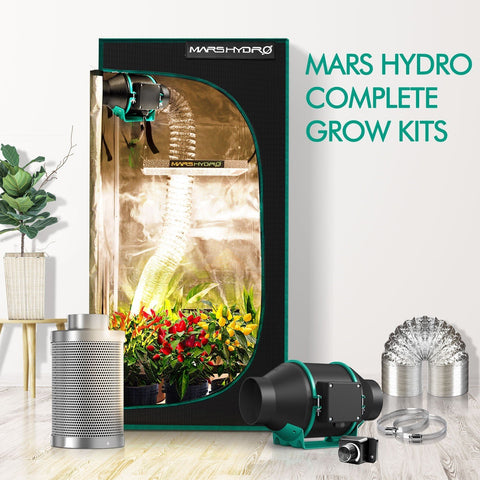About LED Grow Lights
Show Sidebar
Recent Articles
-
What's the similarities and diffrences between Mars Hydro FC series and FC-E series? January 24, 2022
-
How to Use Dimmable LED Grow Lights Properly? December 18, 2021
-
Do Plants Need UV & IR Light All The Time? October 14, 2021
Top Sellers
12 reviews
$875.99 $779.99
2 reviews
$539.99 from $485.99
2 reviews
$559.99 $519.99
6 reviews
$460.99 $391.99
Grow Light vs. Sunlight: Why We Need Grow Light?

The importance of light for plant growth
Through the biological knowledge we have learned before, we know that plant growth is inseparable from water, light and soil. But what effect does light actually have on plants? The simplest summary is photosynthesis. Photosynthesis absorbs light energy and converts it into potential chemical energy. Plants store this chemical energy in the form of sugar. The plants then use this energy to grow. Although photosynthesis originally evolved as a response to sunlight, the development of indoor agriculture has proven that indoor planting lights can be as effective as the sun, or even more.
Advantages and disadvantages of natural light
Sunlight is very beneficial to plants because it has all the energy that plants need to create food for themselves, and it also provides full-spectrum light. The important point is that natural light is free!
Sunlight is very beneficial to plants because it has all the energy that plants need to create food for themselves, and it also provides full-spectrum light. The important point is that natural light is free!
However, it is difficult to find enough sunlight for plants to grow successfully, especially in winter, or when there is not enough natural light in your home. Fortunately, plants can also grow under artificial light, but is artificial light as effective as sunlight? In addition, even in the warmer months, your home may not get enough natural light.
Advantages of grow lights
Grow lights can offset these inefficiencies, they are powerful, energy-saving and durable. They also have low heat output, making them ideal for indoor farming.
Grow lights can offset these inefficiencies, they are powerful, energy-saving and durable. They also have low heat output, making them ideal for indoor farming.
1. Long-lasting effect of grow lights
Unlike the sun, the intensity of LED bulbs does not change-at noon, midnight, midsummer and midwinter, grow lights provide the same consistent and directional light to plants.
2. The controllability of grow lights
At the same time, grow lights provide growers with something they can never have in the sun: control. Using LEDs means creating extra long days of sunlight and brightening, dimming or changing the color of the light according to the crop.
3. Adjustability of grow lights
Plants are very picky about the type of light they absorb. They like blue and red light very much. Although red light is more common in spring and summer, higher levels of blue light occur in autumn and winter. Therefore, it is difficult for natural light to meet the needs of plants for two kinds of light at the same time. In addition, too much red light will cause plants to become elongated and slender, while too much blue light will cause plants to become short and dense with stunted growth. Indoor grow lights provide them with the best red and blue wavelengths, making them grow big, healthy and strong.
Therefore, the emergence of grow lights creates new possibilities for plant growth. No matter when and where, with grow lights, your plants can grow healthily!
At the same time, grow lights provide growers with something they can never have in the sun: control. Using LEDs means creating extra long days of sunlight and brightening, dimming or changing the color of the light according to the crop.
3. Adjustability of grow lights
Plants are very picky about the type of light they absorb. They like blue and red light very much. Although red light is more common in spring and summer, higher levels of blue light occur in autumn and winter. Therefore, it is difficult for natural light to meet the needs of plants for two kinds of light at the same time. In addition, too much red light will cause plants to become elongated and slender, while too much blue light will cause plants to become short and dense with stunted growth. Indoor grow lights provide them with the best red and blue wavelengths, making them grow big, healthy and strong.
Therefore, the emergence of grow lights creates new possibilities for plant growth. No matter when and where, with grow lights, your plants can grow healthily!

















